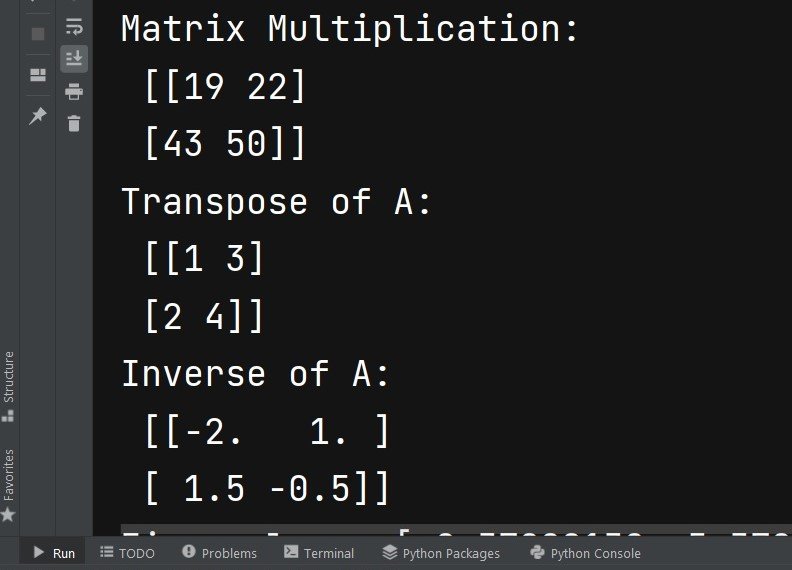In this Numpy tutorial we want to learn about Working with Linear Algebra in Numpy, Linear algebra plays an important role in different scientific and computational fields, from machine learning to physics. In Python Numpy library provides powerful tools for performing linear algebra operations. In this article we want to talk about the capabilities of Numpy for linear algebra.
Understanding Linear Algebra Basics
Before diving into Numpy linear algebra capabilities, let’s talk about some fundamental concepts:
Vectors: Vectors are one dimensional arrays that represent quantities with magnitude and direction. In Numpy vectors can be represented using one dimensional Numpy arrays.
b. Matrices: Matrices are two dimensional arrays that represent collections of data. In Numpy, matrices can be represented using two dimensional Numpy arrays.
c. Matrix Operations: Linear algebra involves different matrix operations, such as addition, subtraction, multiplication and decomposition. These operations play an important role in solving linear systems, eigenvalue problems and many more.
Numpy Linear Algebra Functions
Numpy provides a comprehensive set of linear algebra functions through its numpy.linalg module. This module offers different functions to perform important linear algebra operations. Let’s talk about some of the key functions:
Matrix Operations:
- Matrix Multiplication: numpy.dot() function allows you to perform matrix multiplication easily.
- Transpose: numpy.transpose() function returns the transpose of a matrix.
- Inverse: numpy.linalg.inv() function computes the inverse of a square matrix.
b. Decompositions:
- LU Decomposition: numpy.linalg.lu() function computes the LU decomposition of a square matrix.
- QR Decomposition: numpy.linalg.qr() function computes the QR decomposition of a matrix.
- Eigenvalues and Eigenvectors: numpy.linalg.eig() function computes the eigenvalues and eigenvectors of a square matrix.
This is a practical example of using Numpy in Linear Algebra
|
1 2 3 4 5 6 7 8 9 10 11 12 13 14 15 16 17 18 19 20 21 22 |
import numpy as np # Create matrices A = np.array([[1, 2], [3, 4]]) B = np.array([[5, 6], [7, 8]]) # Matrix multiplication C = np.dot(A, B) print("Matrix Multiplication:\n", C) # Transpose A_transpose = np.transpose(A) print("Transpose of A:\n", A_transpose) # Inverse A_inv = np.linalg.inv(A) print("Inverse of A:\n", A_inv) # Eigenvalues and eigenvectors eigenvalues, eigenvectors = np.linalg.eig(A) print("Eigenvalues:", eigenvalues) print("Eigenvectors:\n", eigenvectors) |
In the above example, we have performed matrix multiplication of matrices A and B using np.dot(), compute the transpose of matrix A using np.transpose(), calculate the inverse of matrix A using np.linalg.inv(), and compute the eigenvalues and eigenvectors of matrix A using np.linalg.eig().
This will be the result

Numpy linear algebra capabilities extend beyond the functions mentioned above. Numpy provides functions for solving linear systems (np.linalg.solve()), computing matrix determinants (np.linalg.det()), performing singular value decomposition (np.linalg.svd()), and more. These functions equip you with different tools for advanced linear algebra operations.
Learn More on Python Numpy
Subscribe and Get Free Video Courses & Articles in your Email